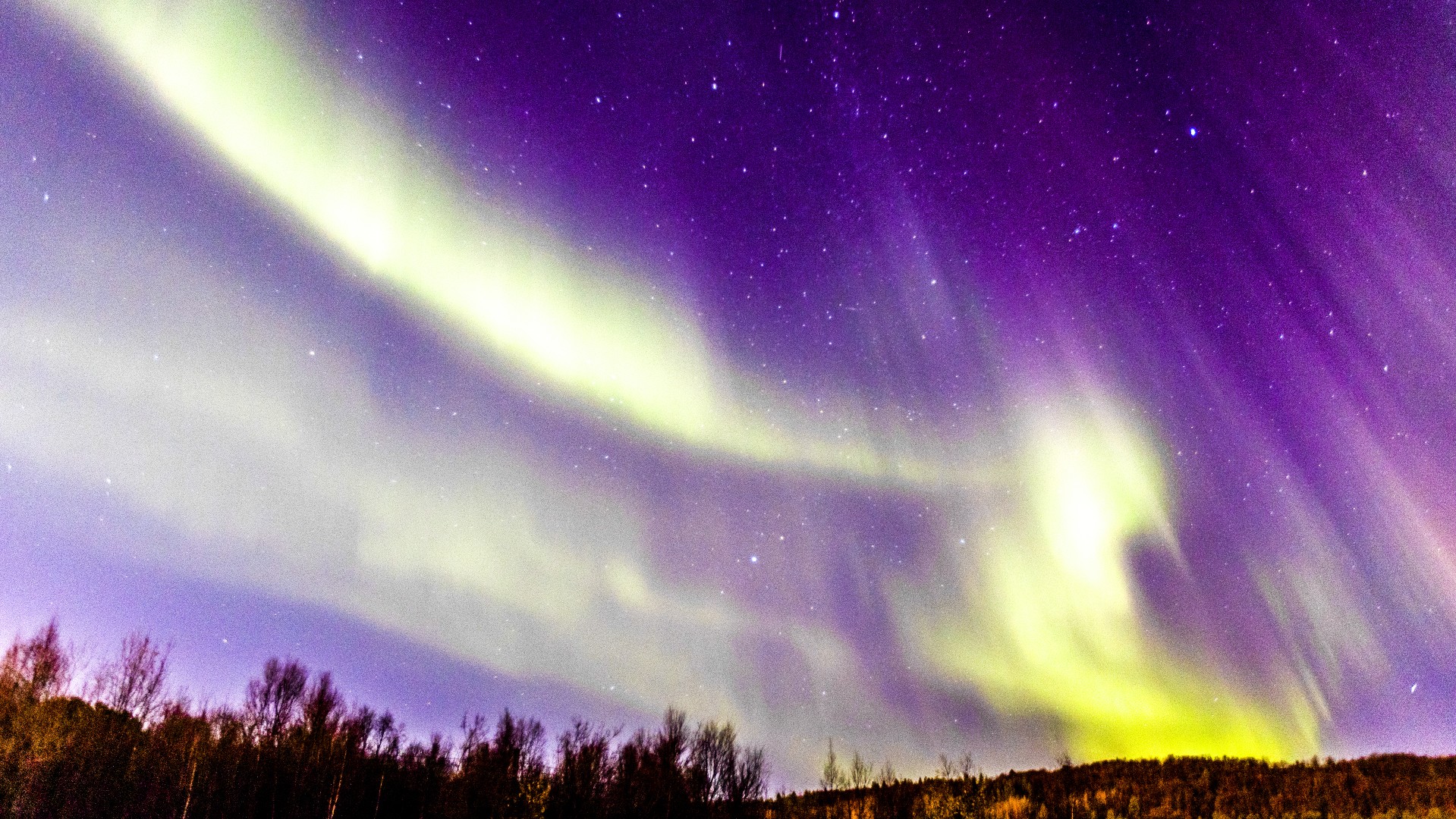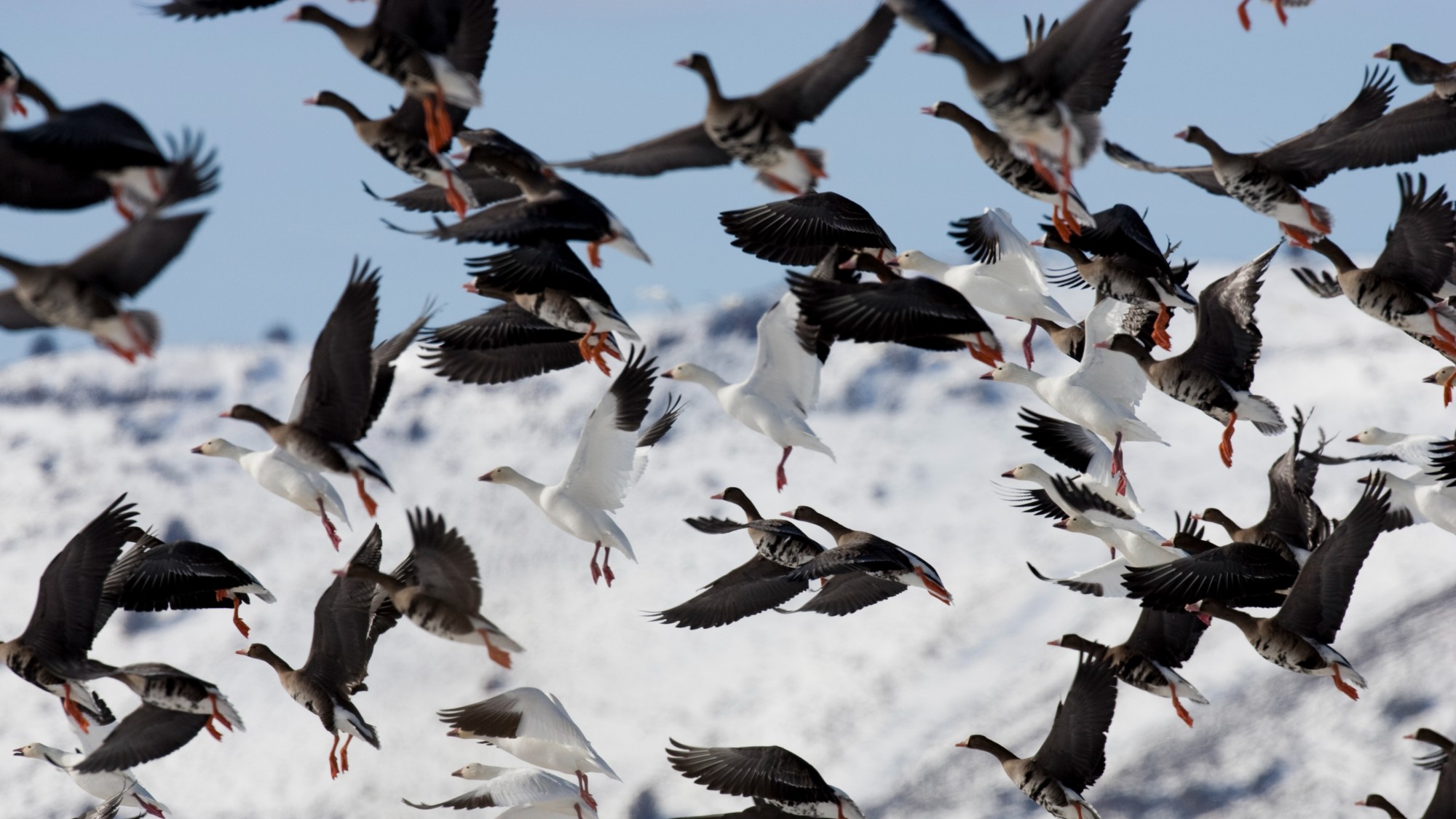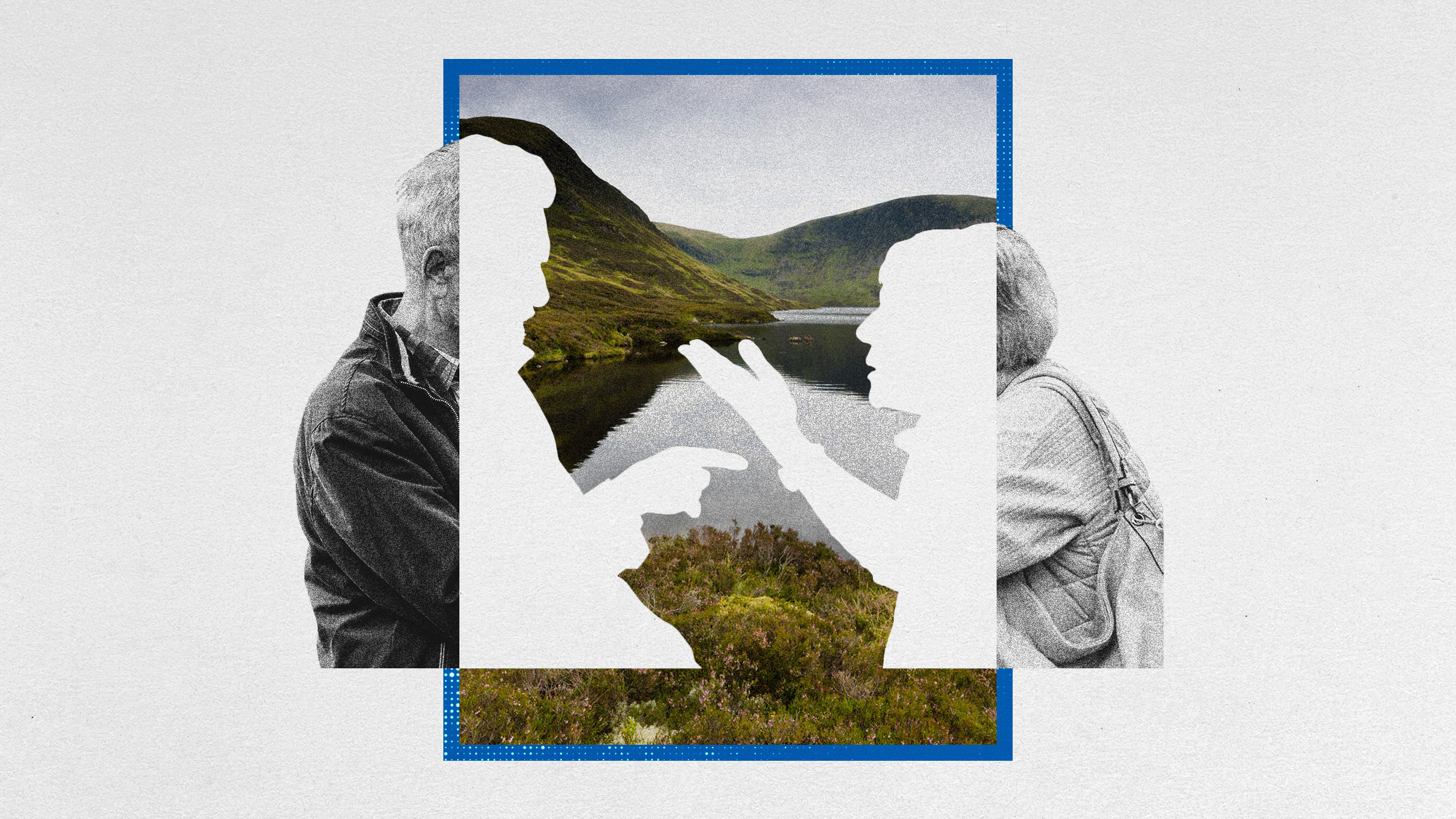Dazzling Northern Lights visible across UK: when and how to see them
Aurora Borealis seen as far south as Kent and Cornwall after ‘particularly strong solar flare’

Skygazers in Britain could be in for another spectacular Northern Lights show tonight after Sunday’s display was seen as far south as Kent and Cornwall.
The Telegraph said the Northern Lights, also known as the Aurora Borealis, “are formed by a solar flare erupting on the Sun, which releases electrically charged particles that collide with gas molecules in Earth’s upper atmosphere”.
Ranging from around 80 to hundreds of miles above the Earth’s surface, the interaction emits green and red colours over the poles, meaning it is usually best seen in high latitude regions closer to the Arctic, such as in Scandinavia, Greenland, northern Canada, Russia and Alaska.
The Week
Escape your echo chamber. Get the facts behind the news, plus analysis from multiple perspectives.

Sign up for The Week's Free Newsletters
From our morning news briefing to a weekly Good News Newsletter, get the best of The Week delivered directly to your inbox.
From our morning news briefing to a weekly Good News Newsletter, get the best of The Week delivered directly to your inbox.
In the UK the Northern Lights are usually only visible in Scotland and parts of northern England. However, The Times reported that last night a “particularly strong solar flare… was directed towards Earth”, meaning the aurora could be seen in southern English counties such as Kent and Cornwall.
Earlier this month Space reported “rare red aurora displays” across wide areas of Canada and Europe, including Scotland.
“The latest wave of dancing polar lights has been especially striking,” said the news site, “as it arrived in rare shades of red that require higher concentrations of solar wind particles to penetrate deeper into Earth’s atmosphere.”
How can you see them?
Usually, to see the Aurora Borealis “conditions must be dark and clear, with as little light pollution as possible”, said the Independent.
A free daily email with the biggest news stories of the day – and the best features from TheWeek.com
But according to the Met Office, the natural display could move in from about 7pm tonight through to about 4am tomorrow. Its video modelling shows the tip of Scotland tinged with red from about 9pm, “which appears to indicate a high probability of the aurora”, said The Times.
The further north you are, the more likely you are to see the display, said Sky News, yet “the conditions still need to be right – dark and clear nights”.
-
 Builders return to the stone age
Builders return to the stone ageUnder the Radar With brick building becoming ‘increasingly unsustainable’, could a reversion to stone be the future?
-
 Icarus programme – the ‘internet of animals’
Icarus programme – the ‘internet of animals’The Explainer Researchers aim to monitor 100,000 animals worldwide with GPS trackers, using data to understand climate change and help predict disasters and pandemics
-
 Why plans for a national park are 'ripping apart' genteel Galloway
Why plans for a national park are 'ripping apart' genteel GallowayUnder the Radar Galloway's towns are 'bracketed with campaign banners' as residents battle over plans for the park
-
 The controversy over rewilding in the UK
The controversy over rewilding in the UKThe Explainer 'Irresponsible and illegal' release of four lynxes into Scottish Highlands 'entirely counterproductive' say conservationists
-
 Lewis whale pod post-mortem: what caused Britain’s worst mass stranding for 70 years?
Lewis whale pod post-mortem: what caused Britain’s worst mass stranding for 70 years?Talking Point Whale beachings are on the rise in the UK, but humans aren’t necessarily to blame
-
 The Week Unwrapped: Alcohol pricing, #JordanToo and coastal retreat
The Week Unwrapped: Alcohol pricing, #JordanToo and coastal retreatpodcast Has Scotland’s minimum drink price failed? Has Jordan reached a tipping point for women’s rights? And will seaside towns be abandoned to the waves?
-
 Shell’s North Sea oil U-turn: ‘a first victory in a longer war’?
Shell’s North Sea oil U-turn: ‘a first victory in a longer war’?Speed Read Controversy after oil giant pulls out of proposed Cambo project
-
 Glasgow’s Cop26 ‘gold rush’: where will all the delegates stay?
Glasgow’s Cop26 ‘gold rush’: where will all the delegates stay?Under the Radar Inflated accommodation prices mean some visitors will travel from Edinburgh


